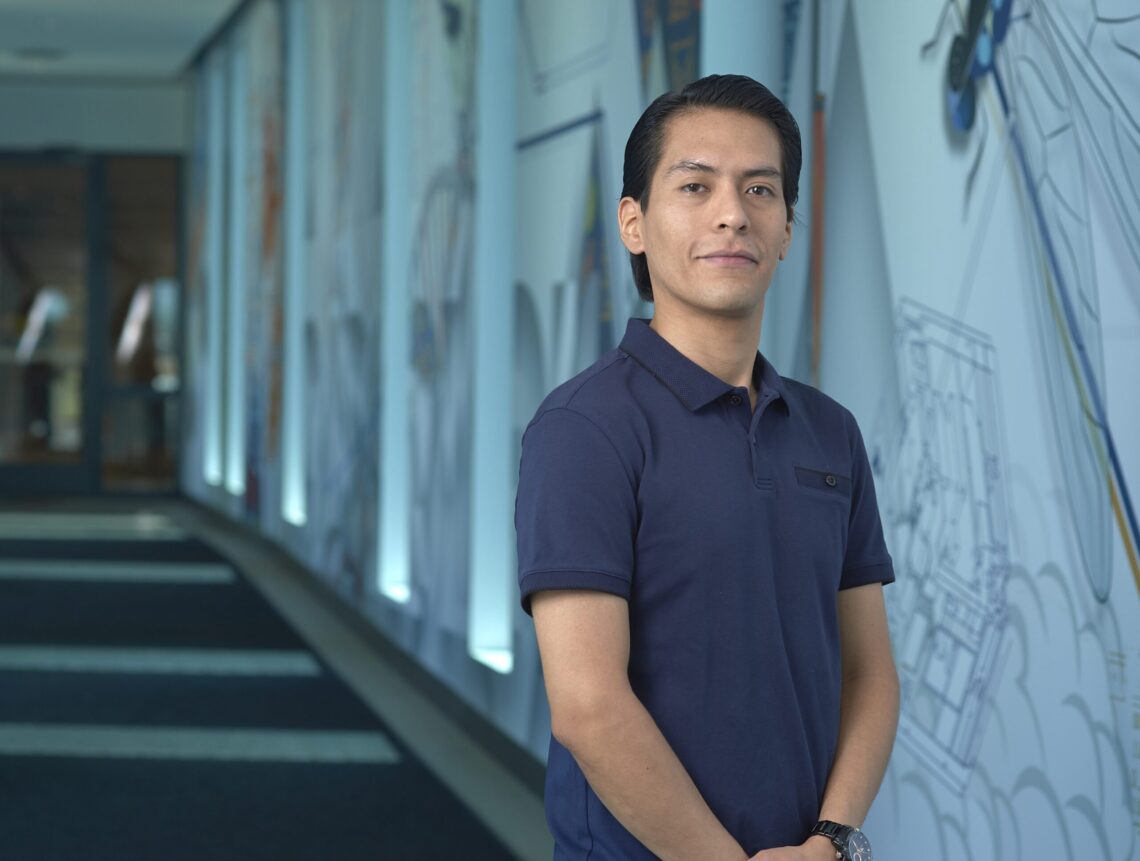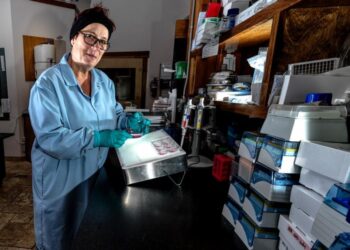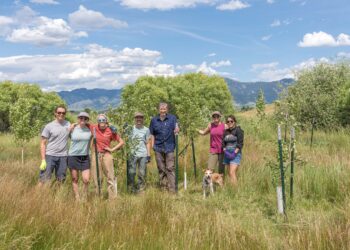By Skip Anderson MSU NEWS SERVICE
Artificial intelligence seems to be everywhere these days, from social media apps to the laboratories of Montana State University. Now, thanks in part to a doctoral student in MSU’s Gianforte School of Computing, it’s in the state’s agriculture fields helping farmers take the guesswork out of maximizing crop yields.
To a layperson, one field of winter wheat might look just like the one adjacent to it. However, Giorgio Morales, an MSU Ph.D. student from Peru, has the data to show that soil conditions and other variables can change significantly not just from field to field, but also in the span of just 10 meters. Morales is leveraging artificial intelligence to crunch thousands of data points to help farmers maximize their crop yields and profits while potentially lowering the amounts of fertilizers they use.

Morales is developing AI methods to determine how combinations and quantities of variables such as soil nutrients, nitrates, humidity and precipitation influence a particular outcome – in this case, crop yield. It’s part of a practice in farming called precision agriculture, in which novel technologies are integrated into production systems.
“We can collect data from the soil, and also we can use aerial images and satellite images to monitor the fields. All of that data can be combined to understand the behavior of the of the fields themselves,” said Morales, who is expected to graduate from MSU with a Ph.D. in computer science in 2025. “We can use that information to predict what’s going to happen during the harvest.”
Armed with this highly detailed information, farmers can adjust the amount of seed, water or fertilizer they need to apply in specific places to maximize their profit and minimize the guesswork.
But, for Morales, his dissertation is only indirectly about maximizing crop yields and minimizing wasted seed and fertilizer. His primary objective is to develop computer models of data-crunching techniques that utilize a powerful subset of AI called neural symbolic regression. It may sound like a biological function within the human brain, but it’s actually a highly complex computer process that transforms the data into a mathematical function that, thanks to AI, is highly adaptable to different settings or projects. Neural symbolic regression is a new field of study, he said, with the first academic paper on the subject published in 2021.
“In the history of scientific discovery, it took a lot of trial and error to obtain mathematical laws that explain certain phenomena, but they were limited to very specific situations,” he said. “When you move away from that situation, even just a little bit, that equation doesn’t explain the phenomena anymore, so you have to come up with another equation.
“But if we have data and observations about the world, is there a way to simply train a model using artificial intelligence to tell us this is the equation that explains the phenomenon that you’re observing?”
It’s that potential adaptability, made possible by AI, that is the subject of Morales’ dissertation. And he’s using data gathered on winter wheat farms near Billings and Great Falls to develop models that could one day be adapted to industries beyond this data-driven method of farming.
Artificial intelligence is a topic of study throughout MSU’s computing labs, said John Sheppard, a Norm Asbjornson College of Engineering Distinguished Professor of Computer Science who is also Morales’ Ph.D. adviser.
“MSU is very active in several funded projects that involve artificial intelligence and machine learning,” Sheppard said. “For example, in addition to the Data Intensive Farm Management project that Giorgio is working on, work is under way with the U.S. Navy developing methods for risk-based predictive maintenance for fighter aircraft, among many other projects.”
Other AI initiatives include an NSF-funded EPSCoR project called SMART FireS, a collaborative venture with the University of Montana in which researchers are using AI and machine learning to extend the Navy work to do probabilistic risk assessment of prescribed burns. The objective is to use AI methods to optimize the location and extent of the burns to reduce wildfire risk.
While at Montana State, Morales has been lead author of 11 papers and coauthor of another three. He recently gave a presentation on his most recent accepted, peer-reviewed paper at the European Conference on Machine Learning and Principles and Practice of Knowledge Discovery in Databases in Vilnius, Lithuania.
“The fact that different communities and groups are recognizing Giorgio’s contributions is a clear indication of the quality and potential impact of his research,” Sheppard said. “There is no doubt that to succeed in the AI space requires working hard, and Giorgio does that. There is no doubt that he has the inspiration to motivate and drive that hard work.”















